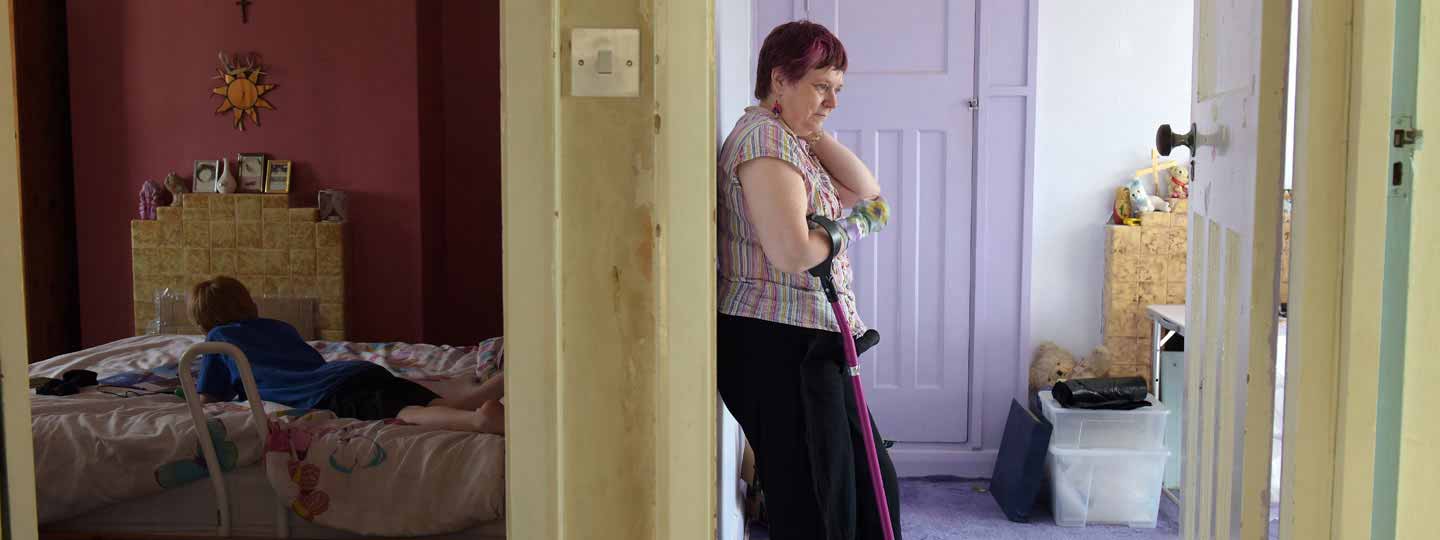5 ways to help with fatigue
13 April 2022
To those familiar with fatigue, the idea that it’s simply ‘feeling a bit tired’ is something of an understatement.
The extreme exhaustion that characterises fatigue is particularly common in rheumatoid arthritis and is thought to be partly caused by the chemicals that are released most intensely by the body when the condition is in the inflammation stage. This is known as a flare-up and can cause flu-like symptoms – one of which is fatigue.
“Fatigue is a feeling of overwhelming tiredness, lack of energy and weakness,” says rheumatologist Dr Sarah Rae, of BMI The Manor Hospital.
“It impacts hugely on the person living with arthritis, affecting all aspects of their lifestyle, from family and friends to jobs and careers. That said, it can be managed – the trick is to achieve and build on small victories. These can be more successful and sustainable if you make good lifestyle choices, such as eating well and staying as physically active as you can.”
Your fatigue could be better managed by taking these five easy steps.
1. Get tested for other conditions
Anaemia is often found alongside arthritis and is a common cause of fatigue. Anaemia can be caused by lack of iron in your diet, and this means your red blood cells can’t carry enough oxygen to the parts of your body that need it.
“GPs are generally very good at diagnosing and treating anaemia,” says Dr Rae.
“However, thyroid disease remains a major concern, because it can masquerade as so many other conditions. Dry skin and thinning hair are common symptoms, alongside the fatigue and aching joints that people put down to arthritis. Your rheumatologist or GP should offer tests to check your thyroid function.”
If thyroid disease is diagnosed, it’s reasonably easy to manage with the right medication.
2. Check for vitamin deficiencies
“Vitamin D deficiency affects most of the population. If you haven’t topped up your levels during the summer because of work or fatigue making you stay inside, you may be lacking come winter,” says Dr Rae.
“This can lead to weakness of muscles, low mood and lethargy – all typical symptoms of fatigue. Vitamin D levels are often low in forms of inflammatory arthritis, such as fibromyalgia, rheumatoid arthritis and lupus.
I recommend using a vitamin D spray under the tongue each morning – this gets straight into the blood stream.”
B-group vitamins and folate are essential for good energy levels and optimal nerve function, which are both important in fighting fatigue. Folic acid also seems to reduce the chance of heart attacks and strokes. Vitamin K is vital for bone health, which can improve muscle function and fitness.
3. Eat a healthy diet
While it’s tempting to tuck into comfort foods, your mind and body will thank you for giving the creamy pasta dishes a miss.
“A low-carb diet rich in plant-based foods, such as nuts, olives, beans, fermented products and green leafy vegetables, boosts gut health and strengthens immunity,” explains Dr Rae. “This is because a more diverse microbiome [the collection of three trillion microbes that live in the gut and aid the fermentation, or breakdown, of food] improves the gut barrier and prevents ‘leaky gut syndrome’.”
This isn’t a recognised condition, but some professionals claim it is the cause of many long-term conditions, including chronic fatigue syndrome.
Health Supporters claim that many symptoms and conditions are caused by the immune system reacting to germs or other substances absorbed into the bloodstream through a leaky bowel. “It’s estimated that we need 30 different plant-based foods per week, so challenge yourself to see how many you can eat over seven days,” says Dr Rae.
4. Practice good sleep hygiene
It’s ironic that those with fatigue often find their sleep is disturbed and unsatisfying. “Sleep hygiene techniques can be very helpful,” says Dr Rae.
“Simple things such as establishing consistent times for going to bed and getting up, and sleep rituals such as screen shutdown followed by slow, deep breathing and stretching, can help.
“Japanese researchers found that a routine of holding and releasing tension throughout the body in a systematic way is effective in preparing the body for sleep. Start by stretching the hands for the count of several deep breaths and then gradually relaxing them. Next, clench a fist and release. Progress slowly down the body, extending out the spine while clenching and releasing the glute muscles in the bottom.
Finally, stretch out the legs, releasing the knees and tensing and stretching the toes, each time releasing the tension over the course of four or five deep breaths.”
5. Use the four Ps
These ‘Ps’ are problem-solving, planning, prioritising and pacing. Use problem-solving to pinpoint activities that cause you to become most fatigued. This means you can plan your day around them, and rest before and after. That allows you to prioritise and save your energy for the things you enjoy, and activities you’ll be able to sustain for longer if you pace yourself.
We’re here whenever you need us.
If you would like to talk to someone, you can call our free helpline on 0800 5200 520.
- Chat to our Arthritis Virtual Assistant
- Join our online community
- Stay in touch and follow us on Twitter, Facebook and Instagram.
You might also be interested in...
-
Are you getting enough vitamin D?
It’s known as ‘the sunshine vitamin’ and is essential for healthy bones and can be used to treat conditions such as osteoporosis. Read how you can get enough of this nutrient.
-
The boom and bust cycle and fatigue: your questions answered
Joseph Loades, a physiotherapist based at the Royal Blackburn Hospital answers your frequently asked questions relating to fatigue and the boom and bust cycle.